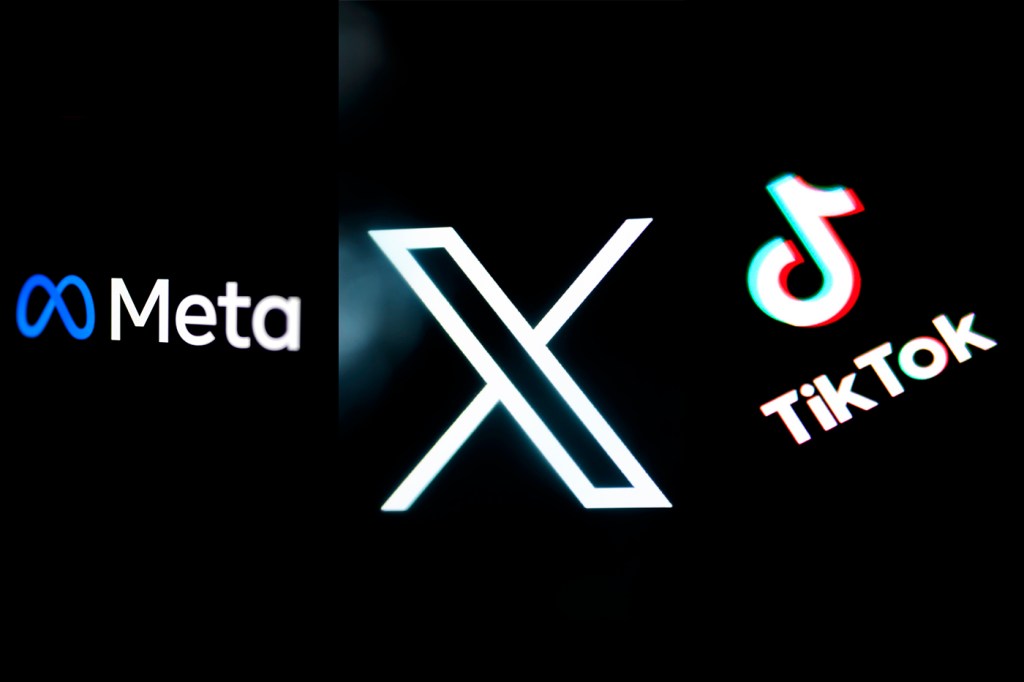Will gutted safeguards doom social media – and the election – in 2024?
Between moderation teams on the major platforms being ravaged and generative AI making it easier to spread and sow disinformation, experts say 2024 could test the limits of the social media landscape.

Sometimes it seems like one year in the world of social media is the equivalent of five years everywhere else. Conversations, information and controversies all move faster, and the state of play is constantly changing.
Entering 2023, TikTok, Twitter (now X) and Meta’s Facebook and Instagram were all in various states of flux –– and that remains the case. But the stakes are higher going into 2024, experts say, and it comes down to one word: elections.
There are major elections taking place in more than 40 countries, including the U.S., in 2024, and where social media is headed has never been more important. Experts say there’s reason to be worried going into election season.
“One of the things that I’m concerned about is the fact that platforms have descoped their trust and safety teams and their election integrity efforts,” says Laura Edelson, an assistant professor of computer science at Northeastern University. “That is not to say that we will necessarily feel the pain of those cuts in the U.S., but other countries certainly will. … I am concerned about the current state of resourcing and the current state of information sharing going into what is going to be one of the most intense years for elections we’ve had in a long time.”
In 2023, many of the biggest social media and tech companies significantly downsized their teams devoted to fighting misinformation, disinformation and hate speech. The results have been keenly felt with the Israel-Hamas war. Especially in the immediate aftermath of Hamas’ initial attack on Oct. 7, “there was a ton of really hateful discrimination flowing across all the platforms” with incredible speed, says John Wihbey, an associate professor of media innovation and technology at Northeastern.
Wihbey calls the Israel-Hamas war the defining moment for social media in 2023, likening it to lighting “a match in a giant, very dry forest that had been baking in the sun.” But the circumstances that led to the explosive spread of emotion and mis- and disinformation –– the gutting of moderation teams and the design of the platforms’ algorithms themselves –– are still there. The 2024 elections in the U.S., India, Taiwan, Mexico and beyond pose a similar crisis for social media platforms and their users.
“It’s sort of like having a fire department with no hoses or fire hydrants available,” Wihbey says. “We have to think about what happens when a crisis emerges and, from a public interest and regulatory perspective, what we expect as the public to happen from these platforms.”
Featured Posts
Experts say there’s another factor that could make social media’s role in election season even more complicated: the proliferation of generative AI.
Generative AI tools are very good at cheaply and effectively doing style transfer, transforming a simple text prompt into a particular style of writing or image, Edelson says. Previously, the easiest way to identify a disinformation campaign, at least in the U.S., was poor style transfer used by non-native English speakers, most famously Russians in the 2016 presidential election.
“All of a sudden that just got super cheap and easy,” Edelson says.
For bad actors, these AI tools also lower the cost of sowing disinformation by allowing them to more easily create fake accounts and coordinated bot networks.
“I wouldn’t say it’s a low probability but I also wouldn’t say it’s a high probability that it becomes the central story and makes life untenable online, but there’s a chance that bad actors with increasing capability could really wreak havoc in a year where public deliberation is crucial across the world in all these election environments,” Wihbey says.
However, Rahul Bhargava, an assistant professor of journalism and art and design at Northeastern, is more skeptical about the impact some forms of AI-driven disinformation, like deep fakes, will have on the election.
“We haven’t seen an explosion of deep fake videos where you have made-up videos of Biden saying he supports Palestinians that would cause a controversy,” Bhargava says. “Honestly, I’m surprised. I wonder, is the deluge we all fear going to come slower?”
Editor’s Picks
Outside of elections, Instagram still faces a 41-state lawsuit against over the alleged harm it has had on youth. Meanwhile, after a year of attempts to ban TikTok on government phones and in entire states, Wihby predicts the political winds could start to blow in TikTok’s favor.
“Almost all of this is a function of geopolitics and how much people in Washington are banging the table about things they are worried about with China, whether it’s Taiwan or IP theft or competitiveness over AI,” Wihbey says. “TikTok seems to be a political football, and right now the football doesn’t really seem to be on the field for whatever reason.”
As for X, the platform’s future is still in the volatile hands of Elon Musk. Will the platform previously known as Twitter survive 2024? Edelson is confident it will still be around and people will still be using it, mostly because there are still high-profile, profitable users on it and “there is no good replacement for the kind of elite communication platform that it is.”
New platforms like Threads, Meta’s would-be Twitter killer, and new players like Mastodon didn’t end up disrupting the stasis of the social media landscape as much as some thought. With the elections likely to drive even more engagement in this space, are the players too entrenched for some new platform, like TikTok, to rise up in 2024?
“[TikTok] did create a new form of media consumption and it is possible that someone will do that again this year, but I don’t exactly see it,” Wihbey says.











